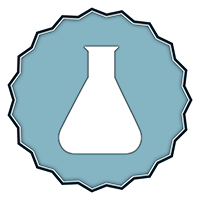Thirty-years ago I was as blind to addiction as nearly everyone else walking down the street. It never occurred to me that I might be addicted to anything. Like everyone else I got up in the morning and went to work. I was productive at my job and provided my family with a very nice life-style. How could I be an addict?
By: John Giordano DHL, MAC
Co-Founder of:
G & G Holistic Addiction Treatment Center
Chaplain of the North Miami Police Department
It took more than a family intervention to convince me I have an addiction. Begrudgingly, I accepted my family’s challenge and entered a rehab facility. Several weeks into the program I recognized how far I’d fallen. What I’ve came to realize from my experiences and those of countless others, is that addiction is expanding all around us, and that there are more people unaware or in denial of their addictions than those that know.
I’m a firm believer in personal responsibility; the duty of making the right choices for ourselves and the people close to us. Yet the more I see of the emerging world we live in, the more I realize how our choices can be undermined.
One might think that the addiction rate would decrease considering all the huge leaps in science and medicine over the last twenty plus years that have given us a far better understanding of the roots of addiction and a clear path to treatment. But the salient fact is that the inverse has happened. Seven out of ten Americans are taking some form of medication and opiates are on the top of the list. Even more concerning is that we consume 80% of all the pain killers made in the world today. Drug overdose deaths are up for 11th consecutive year and prescription drugs now kill more Americans than heroin and cocaine combined. But why; do we have that much more pain than the rest of the world or have we become an addictive society?
In a New York statewide consolidation lawsuit against Purdue Pharma, manufacturers of OxyContin, the attorneys referred to their 1000 clients as ‘accidental addicts.’ These were mostly regular hard working people who were prescribed OxyContin for a work or sports related injury by a doctor they trusted. Unfortunately their trust in their doctor – and the doctors’ trust in the pharmaceutical company were both betrayed. Not long after the lawsuit was filed, Purdue Pharma and three of its executives pleaded guilty in federal court to other criminal charges that they misled regulators, doctors and patients about the drug’s risk of addiction and its potential to be abused. The industry leader in the manufacture and sales of opiate analgesics was ordered to pay a $634.5 million fine. However, OxyContin is still on the market without any changes to the extremely addictive product whatsoever. Last year Purdue Pharma’s sales exceeded $3.0 billion dollars.
Recently, a paper I’d contributed to with Dr. Ken Blum was published in the highly regarded international medical and scientific peer-reviewed journal, PLOS ONE. To view the entire article please visit: http://bit.ly/1bvGIrY In the paper we revealed the results of a longitudinal study on the long-term effects of the popular opiate maintenance drug Suboxone®. What we found was a flat affect or a lack of outward expression of emotion – a diminished facial, gestural, and vocal expression resulting from long-term use. Certainly Suboxone® is safer than street heroin but they’re both opiates. Why are we switching heroin users and some prescription drug addicts to a prescription opiate rather than getting them off drugs all together? Throughout my career I’ve counseled countless numbers of people using pharmaceutical opiates like Suboxone® to manage their addiction. I can tell you first had that keeping these people on opiates for extended period compromises their rehab and makes a successful life of sobriety that much more challenging. The best path is not to extend their addiction but to address it as soon as possible.
Our addictive society extends its reach far beyond substance abuse. Not long ago I was asked to be a keynote speaker, along Dr. Ken Blum, at the 1st International Conference on Behavioral Addictions held in Budapest, Hungary. The hot topic at the conference was “Process Addictions.” These are the addictions – such as sex, food, gambling, Internet, exercise, bulimia, anorexia, gaming and so on – that lurk in the shadow of their big brother, substance abuse. What most people don’t realize about these addictions is that in most cases they have a similar effect on the brain and can be just as debilitating as substance abuse – even deadly. The question asked most at the conference was ‘why the explosion of addiction?’
Dr. Blum is uniquely qualified to answer part of the question. Over twenty-years ago he discovered the reward gene which is often referred to as the addiction/alcohol gene. What he discovered was that people who have the DRD2 –A1 gene do not process the brain chemical Dopamine – the primary neurotransmitter of reward and pleasure – effectively. As a result, people with this gene often unconsciously resort to external stimuli that they’ve learned triggers the production of Dopamine as compensation. They might turn to abusing drugs or food, sex, gaming, et cetera because this behavior stimulates production of Dopamine that aids in normalizing their brain function.
Dr. Blum’s discovery forever changed the way we view and treat addiction. From his studies spanning four-decades, he estimates that over one-third of the American public – or roughly 100,000,000 people – have this addiction gene. That is not to say that one-in-three Americans are addicts; but rather one-in-three have a genetic predisposition and are more susceptible to addiction.
For these people the choices in front of them are much less clear. Keep in mind they’re doing what their subconscious is telling them to do. When confronted with stress or anxiety, it would be normal for them to eat a sugary treat – or some other high glycemic food that boosts their Dopamine level. It’s what makes them feel normal and able to cope with their stressful environment – and the food industry has taken notice.
Glucose is necessary for the brain to function. It’s a brain and body fuel that gives us energy. When blood sugar levels start to dip the brain sends a message to cells instructing them eat more to replenish its stores. Once blood sugar levels return back to normal the brain turns those cells off. Although sugar is necessary for the body to survive, extended periods of high blood sugar levels will kill body and brain cells over time. Someone who consumes excessive amounts of sugary or high glycemic foods to boost their Dopamine levels is likely positioning themselves for a very unhealthy life.
Even more concerning to me is high fructose corn syrup; an inexpensive sweeter made from corn that is found in nearly every soda, fast food restaurant and packaged food – a trillion dollar industry. It too provides the brain and body with the energy it needs, but it doesn’t have an off switch. High fructose corn syrup literally fools the brain into thinking it needs more food. A person’s blood sugar levels could be in a normal range or even elevated and that individual would still be craving food. For all intent and purposes, if you eat junk food, it will make you want to eat more junk food.
People have asked me if sugar is really addictive. According to Dr. Blum, absolutely. He says it only takes a matter of minutes after sugar has been consumed to reach the brain and has an effect similar to cocaine. Sugar stimulates the production of the ‘feel good’ chemicals that affects our mood and behavior. We’ve had a lot of success treating people with food and sugar addiction at my center. I can assure you it is an addiction. People experience withdraws similar to drug abusers although not as intense. They regularly meet with therapist to uncover the emotional underpinnings of their addiction and learn a new way to approach their life and handle stress in their environment.
Sugar has been known to be toxic and thought to be addictive for quite some time; yet our sugar consumption has increased from an average of 10 pounds per person in 1800 to 140 pounds per person per year today. Michael Moss, a Pulitzer Prize–winning investigative reporter at The New York Times, who has done extensive research into the food industry, puts it into perspective. In an article he wrote titled, ‘The Extraordinary Science of Addictive Junk Food,’ Moss stated: “What I found, over four years of research and reporting, was a conscious effort – taking place in labs and marketing meetings and grocery-store aisles – to get people hooked on foods that are convenient and inexpensive.”
Caveat emptor – “let the buyer beware.”
Having begun my addiction treatment career nearly thirty years ago, and running my center for the majority of that time, I have the advantage of reflection. What I’m seeing right now is we’re headed deeper into an addictive society where our good choices can be unwittingly compromised. Our best defense is education. Take a few minutes to understand addiction so that you can recognize the behaviors in yourself and the loved ones around you. Click on my website link below to find out more. I’d also suggest you consider holistic as a first option for your health needs. There’s a plethora of evidenced-based and scientifically-proven remedies for you and your doctor to consider. The best advice of all comes from the Greek physician Hippocrates who proclaimed nearly 2,500 years ago: “Let food be thy medicine and medicine be thy food.”
Pplease feel free to call me directly at (786) 271-5732 for any questions you may have. Also for the latest development in cutting-edge treatment check out my website: http://www.holisticaddictioninfo.com


